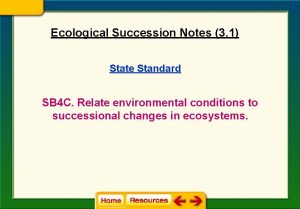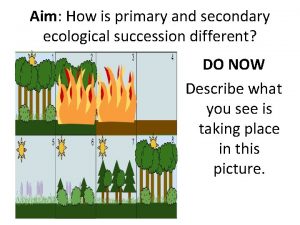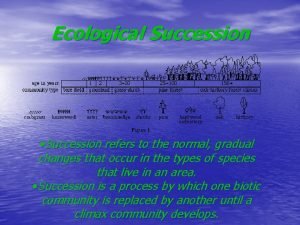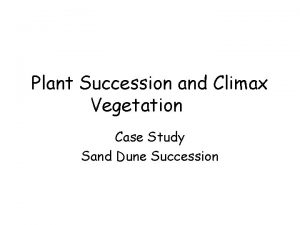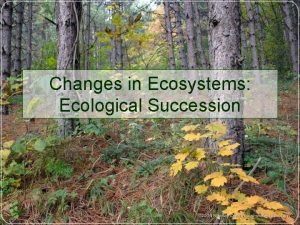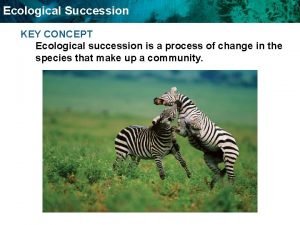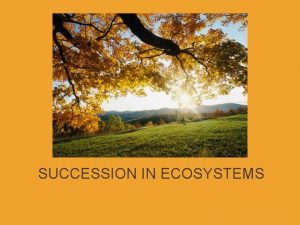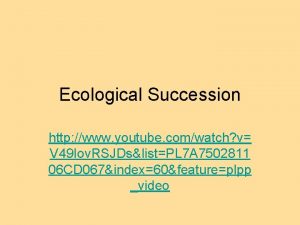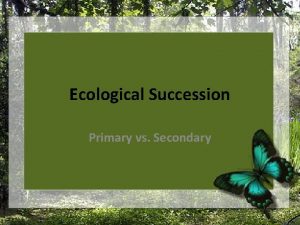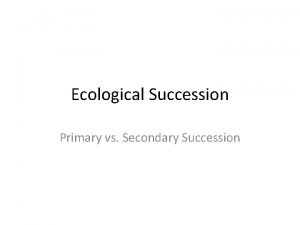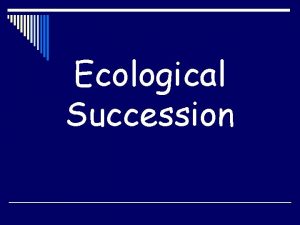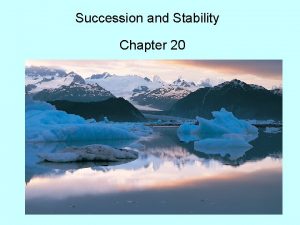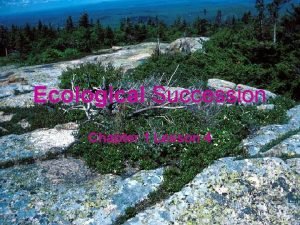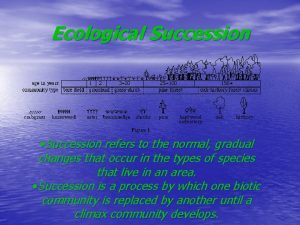Ecological Succession 2013 2014 Ecological Succession The gradual










- Slides: 10

Ecological Succession 2013 -2014

Ecological Succession: The gradual change in species abundance and diversity after a disturbance. • Community = ecological unit composed of a group of populations of different species occupying a particular area

Resilience VS. Persistence • Resilience: Ability of an ecosystem to come back • Inertia/persistence: Ability of ecosystem to survive • A Rainforest has so many species it would rarely die off, chances are one species would live, it is persistent. However it is so complex that if it dies off it cant come back, it is not resilient. • Grasslands are all one species and could get sick and die easily, they are not persistent. How ever grass can easily come back, they are resilient.

Create this table in your notes Primary succession Secondary succession

Primary succession • The establishment of a biotic community from a previously lifeless terrain • Uncommon • Take 1000’s of years to build soil • Ex-Parking lot, Lava

Secondary succession • Follows a disturbance in an ecosystem that has damaged or removed part of the established community. • Leaves soil or sediments. • Ex- Fire, clear cutting

Aquatic succession A waterway slowly gets filled with sediments and is eventually overgrown

Case Study: Red woods and Timber companies • • The tallest trees in the world. Live to be 2, 000 years old 96% of them have been cut down. Can grow to be 368 ft tall.

Two strategies for cutting trees 1. Clear cutting • Completely destroyed an area of forest, but leaves other areas untouched. • Cheaper

2. Selective cutting • Allows animals to stay in the same place, does not completely kill environment. • Cost more
 Ecological succession succession of a pond
Ecological succession succession of a pond Ecological succession succession of a pond
Ecological succession succession of a pond Ecological succession
Ecological succession Climax community
Climax community Ecological succession case study
Ecological succession case study Ecological succession def
Ecological succession def Ecological succession
Ecological succession If there is no struggle there is no progress explanation
If there is no struggle there is no progress explanation Secondary succession def
Secondary succession def Youtube ecological succession
Youtube ecological succession Secondary succession ________.
Secondary succession ________.

